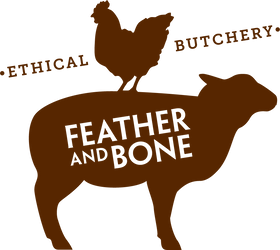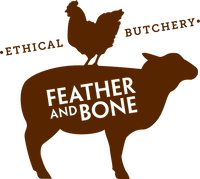Reasons to be cheerful!
A healthy environment isn't a nice extra we can do without...
It's been a hell of a few years in our sunburnt country. Drought, flood, fire and now pandemic.
Apiarist Tim Malfroy, whose hives reach far up into the Blue Mountains wilderness and cover a wide range of different landscapes, counts off an astonishing list of record-breaking drought, fire, flood and temperatures events over the last few years and he sees a worrying loss of biodiversity in the region. This is borne out by The Conversation's latest report on the state of the Australian environment which gives us an abysmal score of 0.8 out of 10.
It's difficult to see past COVID-19 right now. But a report like this mustn't be overlooked and, as The Conversation says, 'It’s clear that our well being, if not our survival, depends on learning to live within nature’s limits.'
It's abundantly clear to us that all these events, including the pandemic, are a manifestation of a world profoundly out of balance caused by a bloody-minded unwillingness to see the connections between things and the critical need for holistic management.
But it's also clear to us that, despite the abysmal environmental scorecard and the fact that things are undeniably dire and could get much worse, there are some wonderful reasons to feel optimistic.
For the last 15 years we've been working with a collection of remarkable, visionary and courageous producers. Their restorative work and determination to build as much biodiversity as possible on their farms has given us the tonic we need to keep going in the face of the depressing destruction wrought by mainstream agriculture. Their work fills us with hope and optimism and every time we visit their farms and receive their wonderful produce we are reenergised and inspired.
We could go on for some time in that vein and, in fact, we've written a book about this which will be published in August this year.
But, in the meantime, let's have a look at just a few of the farmers whose wonderful produce fills our butchery this week. And if the fact that at least some our our wonderful country is being managed by these champions doesn't get you looking on the bright side of life, then it's time to watch Life of Brian again.
Reasons to be cheerful!
Moorlands Bio-dynamic Texel lambs
Vince Heffernan is the sixth generation to farm his land near Canberra and he's spent 20 years restoring and regenerating the landscape. He's probably the only award-winning lamb farmer in Australia who has built a fish sanctuary on his property to protect an endangered local species.
Malfroys Gold Wild Honey
As the conventional bee keeping industry races to catch up to the intensive efficiencies and scale of the rest of the agricultural landscape, Malfroys Gold are heading in the opposite direction, focusing in on a more balanced, nuanced, localised relationship that builds resilience and capacity and produces a really extraordinary honey that is a unique expression of the time and place.
Grasslands Poultry Heritage Sommerlad chickens
99.9% of Australian meat chickens are white broiler birds - it's a bland monoculture that is inherently weak. Enter the Sommerlad chicken, a healthy, vigorous chicken with diverse genetics that has been bred specifically to thrive outside in Australian conditions. It's no surprise that it's swept the Delicious Produce Awards for four years in a row. Only five farms grow these chickens and, we're very proud to work with the wonderful Bryan and Kim Kiss at Grassland Poultry, near Wellington in NSW.
Burraduc Buffalo Dairy
One of the few award-winning Australian dairies organised around regenerative principles and the concept of sharing milk with calves. Instead of following the conventional dairy model of weaning calves within a week to take the full supply for production and culling the males at five days, Burraduc cows are milked every morning after which they're reunited with their calves. The cows and calves then spend the day meandering across the pastures at the idyllic farm near Seal Rocks on the mid-north NSW coast. Calves run with their mothers until they're weaned at six or seven months old when the females go into the production herd and the males become veal.
Glenburnie Black Angus
Three year old, traditional Scottish Angus - stocky, slow-growing, pasture-fed and finished and markedly different from the American Angus that dominate the international market and are bred to grow very big, very quickly on grain in feed lots. Ironically, Jarrod Bennett's Glenburnie herd genetics come from the remarkable Diamond D Angus stud in the US. The Diamond D owners could see the way the industry was going - preferencing speed and size over flavour and animal health - and decided to close the herd and line breed to protect the wonderful, traditional Angus genetics. Glenburnie cattle are raised on regeneratively-managed pastures in West Gippsland, Victoria.




Leave a comment